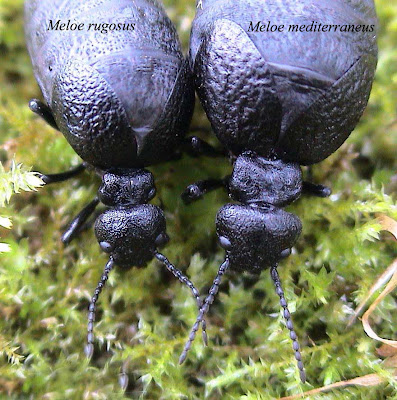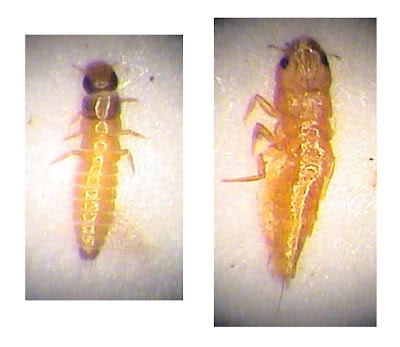Over the course of the year we get many enquiries from members of the general public asking us to 'name that bug'. Some of these enquiries are of insects that people have spotted whilst out and about in the town and surrounding countryside, a few are even of tropical species that people have photographed whilst on holiday. The majority however, come from people who have found something inside their homes and they might want to know what it eats or whether to worry about it being venomous but more often than not, people just want to know what it is. Often these insects have become objects of fascination and people want to learn about them but until they have a name it can be hard to find the information they want.
So that's where we come in. We provide a free identification service (
entomology@oum.ox.ac.uk) for anyone who might have an insect related question, regardless of where they live. We have identified insects for people from places as far away as Australia or as close to home as the Chemistry Laboratory next door.
We always enjoy the challenge and are more than happy to supply people with on-line links or articles about the insect they have found.
In order to get your insect identified then we need one of two things- either a good photograph of the insect or the specimen itself, alive or dead.
If you have the capability to take a good photograph then this can be an excellent resource. Preferably the photograph would be a dorsal shot (the top side of the insect) with good natural lighting. Make sure that all the legs and antennae are in focus and that there is some frame of reference for size. Adding a ruler or coin to the picture will do nicely. Sometimes it might take two or three photos to show the different parts of the insect, especially if it is a bit wriggly.
As many insects are very small and thus difficult to photograph well another option is to send us the specimen. Specimens can be dropped off in the museum in person where we may be able to give you an on the spot identification or they can be posted to us. When posting a specimen you want to pack it into something sturdy such as an old film canister with a bit of tissue in it to stop the insect from rattling about. This works for specimens whether they are dead or alive.
Regardless of whether you send us a photograph or the insect itself there is some extra information that is always useful to us. Firstly, your contact details so that we can let you know what it is that you have found. Secondly, a bit of information about where and when it was found as even a small piece of extra detail can help when identifying something.
For example, there are a few red beetles in the UK such as the Cardinal Beetle,
Pyrochora serraticornis or the Poplar Leaf Beetle,
Chrysomela populi but if you added in that you had found it on a lily plant then we would know before we had even seen it that it was mostly likely going to be the Scarlet Lily Beetle,
Lilioceris lilii which is a pest of
Lilium,
Cardiocrinum and
Fritillaria (lilies and fritilaries). Incidentally, two fun facts: this species makes an audible squeak when you pick it up and the larvae disguise themselves from predators by covering themselves with their own excrement!
Here is an example of an insect that walked in to be identified today, a
Pentatomid bug that goes by the name of
Dolycoris baccarum or The Hairy Shield Bug. Even though the picture is slightly out of focus there is still enough detail in the photograph for us to be able to identify it.
 |
| An adult Dolycorris baccarum or Hairy Shield Bug |
This species can commonly be found in houses at this time of year as they seek out a warm, concealed spot in which to over winter. Other things to look out for include ladybird species such as
Adalia 2-punctata, (the 2-spot Ladybird) and
Harmonia axyridis (The Harlequin Ladybird) which like to hibernate around the edges of windows.
If you have any questions or would like us to identify an insect for you then please contact a curator using the following e-mail address:
entomology@oum.ox.ac.uk










